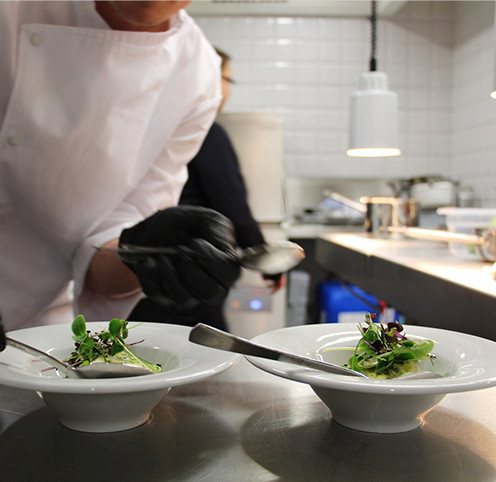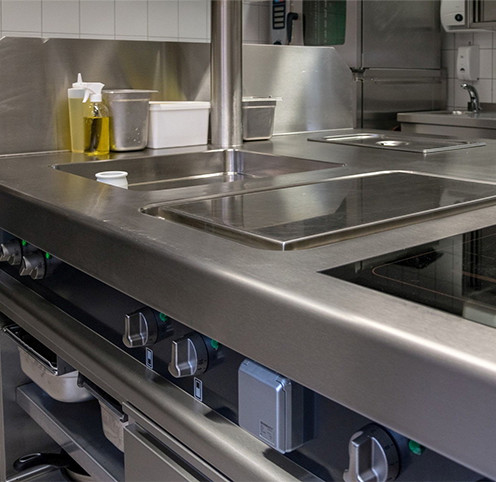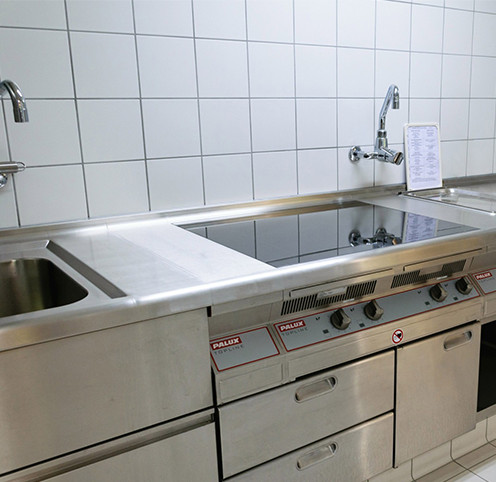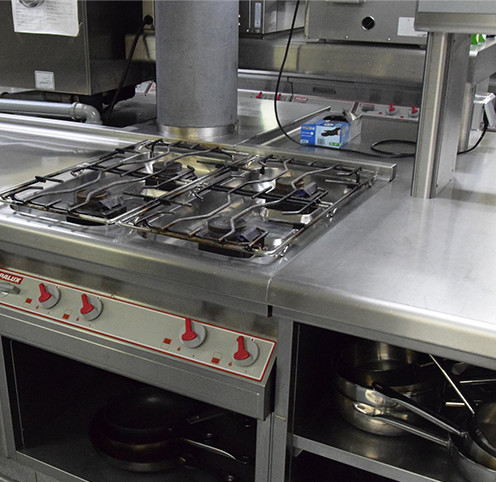Gas cooker vs induction hobs
Finding the right cooker in the catering sector is a great responsibility. Choosing the right equipment not only helps make the cooking process faster but ensures a higher quality, which means a faster return on your business investment. There are several key factors to consider when evaluating what type of hob is the most beneficial to your business.
Advantages of gas ovens
Gas cookers are the easiest appliances to understand and operate. The flame ignites and the cooking can start by just turning a knob; then the process stops instantly, as soon as the flame is turned off. There’s no need to wait for the cooking element to heat up or cool down. However, it should be borne in mind that the area around the burner does not cool down immediately. The natural gas required to operate an oven is a very inexpensive source of fuel. It is so convenient that many kitchens are already equipped with gas inlets.
Disadvantages of gas cookers
However, gas cookers also have their downsides. Let’s discuss some of the obvious ones:
- It takes some time for the cooking pan to heat up;
- The heat is not always distributed accurately and evenly, which may affect the meal being cooked;
- The sustainability of gas ovens is limited, as 35-65% of the energy is released into the atmosphere.

This energy is distributed throughout the room in the form of heat, so in order to ensure the working conditions stay at a suitable temperature, it is necessary to provide:
- Air conditioning;
- Hood ventilation systems.
Both of these systems will make up a significant portion of the investment in your kitchen installation. In addition, the advantage of pre-installed inlets has a negative aspect: those gas inlets have to be taken into account when installing your kitchen technology. This can restrict the layout of the kitchen, sometimes even hindering flexible and productive work in the room.
Advantages of induction cookers
Functionality is the most important advantage, which is confirmed by many of the best chefs in the world. Positive aspects of induction cookers include the following:
- Heats only the cooking dish instead of the surface or the environment, so very little heat is emitted into the room;
- Possibility to regulate the temperature quickly – in other words, energy is saved and used efficiently;
- Wide heating range, which allows for freedom and creative cooking;
- Surface that is very easy to clean;
- A safe appliance, because there is no open flame;
- Aesthetic design that is easily adapted to any modern kitchen interior concept.

Operating an induction cooker
The induction heating mode operates on the basis of the electromagnetic force generated between the surface of the hob and the cooking dish. The induction coils built into the hob generate heat only in places where the sensors detect the bottom of a dish. Since the entire surface is not heated, but only the dish, the food can be cooked extremely quickly. For example, an induction hob will boil 6 cups of water in just 3 minutes – while a gas cooker takes 8 minutes to boil this amount of water. This is a huge difference, especially in the dynamic world of catering, where every minute counts.
The functions of an induction cookers include technological solutions that can facilitate food production and allow for the programming of multiple cooking, temperature and time modes. Such preset instructions not only save energy, but also contribute to the quality of the meals being prepared: e.g. a properly cooked steak can be produced with a sauce that is not overheated.
Induction cookers are particularly suited to the precise work of confectioners, as the fast and accurate heating ensures quick but gentle cooking, eliminating the need for a bain-marie when melting chocolate.

Challenges of induction hobs
There are many myths about induction hobs. Let’s dispel the most common ones.
Myth: They are too expensive compared to gas appliances.
Reality: The use of an induction appliance compensates for energy efficiency in the long run, so the investment pays off quickly.
Myth: They are prone to scratches and the surface can become deformed by heavy weights.
Reality: To avoid scratching the surface, it is recommended that hobs with hard ceramic glass should be used, as these can withstand very high temperatures.
Myth: All baking and cooking dishes must be replaced.
Reality: Induction cookware does not need to be expensive. It differs from the regular cooking dishes by the addition of a ferromagnetic bottom, which acts as a magnet. It is not recommended to use enamelled cookware, even if it is marked as suitable for induction, as the enamel can melt and damage the hob surface.
